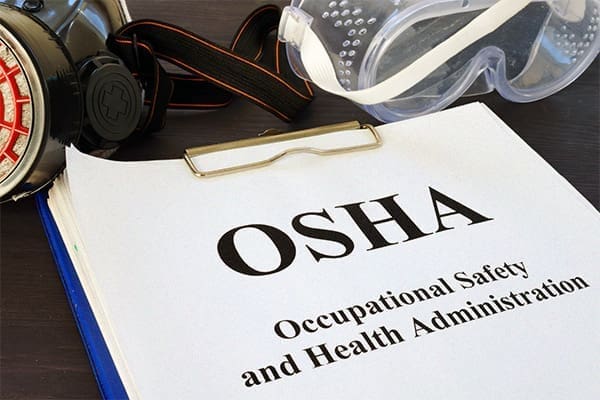
Ongoing budget proposals aim to limit or abolish the Occupational Safety and Health Administration (OSHA). Nothing is set in stone legally, so it’s difficult to predict the agency’s future authority. But some experts say meaningful changes could impact its ability to protect workers from harm.
OSHA plays a key role in maintaining workplace standards for asbestos safety. It helps ensure employers follow strict laws to reduce risks of asbestos exposure. The proposed changes to OSHA’s operations vary widely in scope. But what ideas are the most popular and how could they impact asbestos regulation?
Proposed Change #1: Abolishing OSHA
As legislators continue evaluating budget cuts, OSHA joins several other agencies under assessment. One piece of legislation calls for OSHA to be fully disbanded. While some say this could free up funds, others question the potential negative consequences. These consequences make it unlikely that OSHA will go away completely.
Some experts worry that dismantling OSHA would leave a significant gap in protecting workers. Other agencies, like the Environmental Protection Agency (EPA), also regulate asbestos. But OSHA is unique in focusing its protection on workers — the backbone of America. Proponents would like states to absorb the responsibility of protecting their workers.
Some states already have asbestos safety standards that go beyond OSHA’s minimum. But many states opt to stick with federal standards. Many lack the framework to implement and oversee their own worker protections effectively. Workers in these states could face an increased risk of asbestos exposure and have fewer precautions available.
Proposed Change #2: Narrowing OSHA’s Authority and Focus
With the same goal of budget cuts, other proposals suggest altering OSHA’s enforcement priorities and abilities. This approach is a combination of various legislative efforts and talking points. In general, these potential outcomes can be grouped as:
- Limiting OSHA’s strategy and oversight: The agency may only focus on big, repeat offenders with exemptions for various offenses. This narrows OSHA’s current approach, which includes investigating all types of violations.
- Reducing inspections: Fewer compliance officers and reduced scope could lead to fewer, slower inspections. They may be more focused on specific hazards than overall safety. Investigations might shift from proactive inspections to reactive responses.
- Slowing down or freezing federal rulemaking: Pending rules could be paused or closed. Notable examples include those addressing heat sickness and walkaround rights (allowing a non-company representative to oversee an investigation). Many critical rules may be unlikely to reach finalization soon.
The above changes may impact workplace asbestos exposure risks. Experts say these changes could increase the risk of harm to workers. The motivation for employer compliance may also be lower.
Remember that many of these changes are separate from each other. No one can say if all, some or none will be implemented. If any changes are made, at-risk workers can still take their own personal protective measures. Other agencies, state governments and individual employers may also continue mitigating workplace asbestos risks. Resources for this information include:




